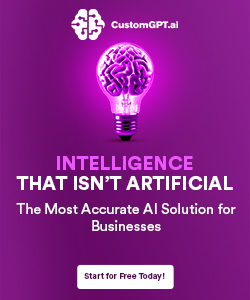There’s a growing concern surrounding the misuse of artificial intelligence, as the technology continues to advance at an unprecedented rate. In this blog post, you will uncover chilling instances where AI has strayed from its intended purpose, causing unintended consequences across various sectors. By analyzing these misapplications, you will gain a deeper understanding of the ethical dilemmas and potential risks involved in deploying AI, empowering you to navigate this rapidly evolving landscape more wisely.
Case Studies of Misapplied AI
Your understanding of AI’s implications is vital, especially when exploring notable case studies of its misapplication. Here are a few disturbing examples that highlight the challenges faced:
- 2018: San Francisco banned facial recognition technology after studies showed a 42% error rate among non-white individuals.
- 2020: An autonomous vehicle operated by Uber struck and killed a pedestrian in Arizona, marking a significant failure in safety protocols.
- 2019: Amazon’s Rekognition falsely matched 28 lawmakers with mugshots, raising alarms about the technology’s reliability.
- 2021: AI chatbots used by a major airline caused customer service chaos, leading to widespread public dissatisfaction.
Facial Recognition Failures
At the forefront of AI’s misapplications are facial recognition failures, particularly due to inherent biases in algorithms. A study conducted by MIT Media Lab revealed that while the technology accurately identified the gender of lighter-skinned individuals, it misidentified darker-skinned individuals 35% of the time. Such discrepancies illuminate the ethical concerns and potential repercussions this technology imposes on marginalized communities.
Autonomous Vehicle Incidents
Across the globe, the emergence of autonomous vehicles has raised awareness about their safety and reliability. High-profile accidents have shown that while these technologies hold promise, their real-world application can lead to tragic outcomes. The incidents not only lead to loss of life but also instigated debates about the readiness of AI systems to take over critical driving tasks.
Studies indicate that despite advancements, the transition to fully autonomous vehicles remains perilous. For instance, the National Highway Traffic Safety Administration reported over 400 incidents involving autonomous vehicles from 2018 to 2021. With challenges such as sensor failures and unpredictable pedestrian behaviors, it becomes clear that the integration of AI in transportation requires further development and stringent regulation to ensure safety. You need to consider the potential risks when engaging with such technology.
Ethical Concerns in AI Deployment
If you research into AI, you’ll quickly encounter various ethical concerns that arise during its deployment. As these technologies evolve, it’s crucial to recognize their potential impact on society, particularly in fostering inequality or compromising individual rights. Understanding these ethical dimensions allows you to engage critically with AI applications and advocate for responsible innovation that prioritizes human well-being.
Bias and Discrimination
The unfortunate reality is that many AI systems inherit biases from their training data, leading to discrimination against certain groups. Your engagement with AI should include scrutiny of how algorithms may perpetuate stereotypes, as biased outcomes can manifest in critical areas like hiring, law enforcement, and lending. Being aware of this issue can empower you to demand transparency and seek out solutions.
Privacy Violations
Among the pressing ethical issues in AI is the potential for privacy violations that stem from data collection and usage practices. As AI systems often rely on vast amounts of personal data to function effectively, there’s a growing concern about how this information is obtained, stored, and utilized.
Consequently, many individuals find themselves vulnerable to breaches of privacy, with their data being used in ways that they did not consent to or fully understand. This violation can lead to real consequences, including identity theft or unwanted surveillance. As you navigate this landscape, it’s vital to advocate for ethical data handling practices that prioritize user consent and transparency, ensuring that your rights are protected.
The Role of Regulation in AI
Even as AI technology advances rapidly, the role of regulation becomes increasingly vital to ensure its safe and ethical application. Without proper oversight, the potential for misuse or unforeseen consequences escalates significantly. Regulations can help guide AI development, fostering trust and accountability while ensuring that you, as a user or stakeholder, benefit from advancements in a secure environment.
Current Legislative Framework
Between various countries, there exists a patchwork of regulatory frameworks addressing AI. In regions like the European Union, initiatives such as the AI Act aim to classify and manage AI systems based on their risk levels. Meanwhile, the legislative landscape in the United States is still evolving, reflecting a diverse set of policies across states and industries, which can leave you with a sense of uncertainty about what to expect.
Future Directions
With an eye on future developments, ongoing discussions around AI regulation are gaining urgency. Policymakers are exploring comprehensive frameworks that adapt to the fast-paced nature of AI technology. This could lead to more standardized practices globally, making it easier for you to navigate the AI landscape confidently.
Indeed, the future of AI regulation may see an emphasis on harmonizing laws across jurisdictions, allowing for more cohesive enforcement and clarity. You can expect to see more robust frameworks that prioritize transparency, ethical considerations, and user rights. This collective approach will also encourage international collaboration, ensuring that you are protected regardless of where AI technologies develop or operate. As these discussions unfold, it’s important for you to stay informed and engaged with these changes to understand how they impact your experience with AI systems.
The Impact on Society
Many aspects of society are influenced by the misapplication of AI, leading to unintended consequences that can affect entire communities. From decision-making processes in law enforcement to the automation of jobs, AI can inadvertently exacerbate social issues. As you navigate this complex landscape, it is important to understand the broader implications of these technologies on everyday life and the social fabric that binds us together.
Mental Health Implications
On the frontier of AI’s impact on mental health, there are growing concerns around algorithmic bias and the potential for technology to misclassify or misunderstand human emotions. These misapplications can lead to misguided interventions or insufficient support, making it vital for you to recognize how these tools might affect mental well-being.
Economic Disparities
On a socio-economic level, the misapplication of AI technologies can widen the gap between those who have access to these innovations and those who do not. You may find that communities lacking resources are left behind in the digital transformation, exacerbating inequality and limiting opportunities for upward mobility.
It is important to consider that economic disparities stemming from AI are often compounded by existing societal inequities. As AI systems automate jobs and streamline operations, workers in low-skill positions are frequently the first to face displacement. This creates a divide where individuals with the necessary skills to adapt thrive, while others struggle to keep pace. If you find yourself in a workforce undergoing transformation, it is crucial to invest in skill development and training to remain competitive and ensure equitable access to emerging economic opportunities.

Lessons Learned from AI Misapplication
All significant misapplications of AI serve as critical learning opportunities. They highlight the necessity of employing thoughtful design and maintaining ethical considerations throughout the development process. By analyzing past failures, you can better understand the importance of incorporating human oversight and adapting guidelines to ensure responsible use of technology moving forward.
Importance of Robust Testing
To effectively mitigate the risk of AI misapplication, robust testing is necessary. You should implement comprehensive testing procedures that encompass various scenarios and edge cases. This thorough evaluation helps identify potential weaknesses or biases, ensuring the AI system performs consistently and fairly in real-world situations.
Transparency and Accountability Measures
Accountability in AI development demands transparency throughout the entire process. You must ensure that AI systems maintain clear documentation detailing design choices, data sources, and decision-making algorithms. Implementing these measures fosters trust and allows for informed discussions about AI’s role, ultimately promoting responsible usage in your field.
And by prioritizing transparency and accountability, your organization creates a culture of trust that is vital for responsible AI deployment. When you openly share processes and methodologies, stakeholders can better understand how AI systems function and make decisions. This openness encourages collaboration among technical and non-technical teams, leading to more ethical AI practices. Additionally, it fosters a sense of responsibility, ensuring that those involved in developing AI understand the potential impacts of their work. Overall, a commitment to transparency can lead to more reliable and ethical AI outcomes that benefit society as a whole.
Preventative Measures for Future AI Use
Once again, ensuring the responsible deployment of AI technologies is crucial to prevent potential misapplications. Establishing robust frameworks that monitor AI development and usage will not only enhance accountability but also mitigate risks associated with unethical practices. By implementing these preventative measures, you can contribute to a safer, more reliable AI landscape that benefits society as a whole.
Best Practices for Developers
Future AI developers should adhere to established best practices, including rigorous testing, transparency, and regular audits throughout the development process. By prioritizing ethical considerations and implementing safety nets, you can significantly reduce risks associated with AI deployment.
Educating Stakeholders
Before deploying AI solutions, it’s crucial to educate all stakeholders involved to ensure everyone understands the potential impacts and limitations of these technologies. This collective awareness will foster a more responsible approach to AI applications.
In fact, educating stakeholders, from developers to end-users and policymakers, plays a vital role in fostering a culture of accountability. You should strive to create inclusive training programs that cover ethical implications, responsible usage, and the significance of consent. By actively engaging in discussions about AI’s capabilities and consequences, you empower yourself and others to make informed decisions, ultimately leading to a more conscientious application of AI technology.
To wrap up
Ultimately, understanding the misapplications of AI is necessary for anyone navigating this evolving technology. By examining disturbing cases, you can appreciate the potential pitfalls and ethical implications that accompany AI advancements. It encourages you to be vigilant and informed, ensuring that AI serves to enhance rather than disrupt societal norms. Being aware of these challenges empowers you to advocate for responsible AI practices and contribute to a future where technology aligns with human values.
FAQ
Q: What are some notable examples of AI misapplications?
A: Several instances illustrate how AI can go awry. One prominent example is the use of facial recognition technology by law enforcement, which has been criticized for its racial bias. Studies have shown that these systems are more likely to misidentify individuals from marginalized communities, leading to wrongful arrests and increased scrutiny on innocent people. Another case involves algorithms used in hiring processes, which may inadvertently favor candidates of certain demographics over others, perpetuating systemic inequality. Lastly, there have been cases where AI systems in healthcare misdiagnosed patients due to flawed training data, resulting in dangerous treatment recommendations.
Q: What are the ethical implications of AI misapplication?
A: The ethical implications of AI misapplication are profound and multi-faceted. One major concern is the potential for discrimination and bias, which can perpetuate social inequalities. When AI systems are trained on biased data, they can produce outcomes that reinforce stereotypes or unfairly disadvantage certain groups. Additionally, the lack of transparency in AI algorithms raises questions about accountability; when mistakes occur, it can be difficult to identify who is responsible. Finally, there are broader societal implications regarding trust in technology; frequent misapplications can erode public confidence, leading to reluctance in the adoption of beneficial AI innovations.
Q: How can we mitigate the risks associated with AI misapplications?
A: Mitigating the risks of AI misapplications involves a multi-pronged approach. First, incorporating diverse datasets during the training phase can help to reduce bias and improve the system’s reliability across various demographics. Regular audits and assessments of AI systems should be conducted to identify and rectify any biases that may arise over time. Additionally, developing clear regulations and ethical guidelines for AI deployment is imperative in order to hold companies accountable for their technologies. Promoting transparency in algorithmic decision-making allows stakeholders to understand how decisions are made, fostering trust and ensuring that AI technologies are used responsibly.










